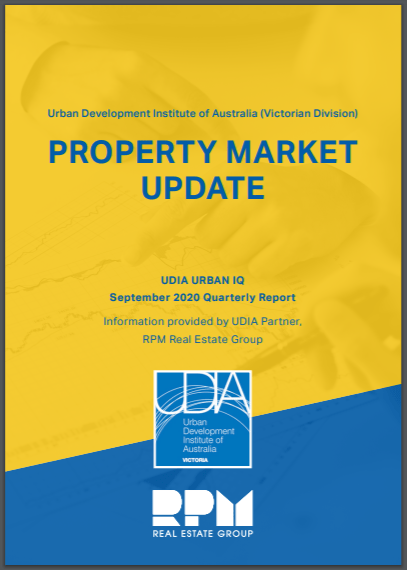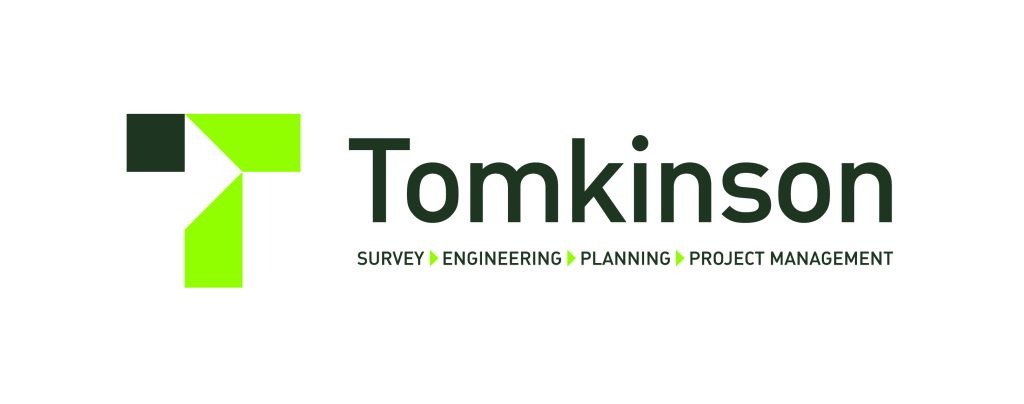UDIA Victoria, in partnership with RPM Real Estate, has released the latest quarterly Urban IQ research publication.
The research highlights the effect of Victoria’s stage 4 lockdowns on our economy and specifically on the residential development industry, and provides figures and analysis to help our members understand the conditions in which we are operating.
Read the full Urban IQ report, September 2020 quarter, in English
Read the full Urban IQ report, September 2020 quarter, in Mandarin
Summary of Key Findings
September Quarter 2020
NATIONAL GROWTH / OUTPUT
- Overall, Victoria’s lockdown for most of September quarter 2020 is projected to have reduced national economic output by around $1 billion per week, and with the state constituting around one quarter of Australia’s economy, the flow on effects to national GDP will be significant. Nevertheless, with the remainder of the national economy entering a recovery phase, small national GDP growth over September quarter 2020 is still projected.
- The overall housing group CPI index remained flat over September quarter 2020. With the HomeBuilder grant and other incentives lowering the out of pocket expenses on new dwelling purchases, growth in this index was limited to 0.5%.
- CPI index for rents declined by a further 0.2%. The temporary travel ban on overseas migrants, higher unemployment, and the rental eviction moratorium period that has led to lower or complete deferment or rental payments, have all conspired to diminish tenant demand, increase vacancies and reduce rents.
EMPLOYMENT – VICTORIA
- Official employment data from the ABS shows Victoria gained 22,400 jobs in July, before entering the stage 4 restrictions at the start of August. Consequently, Victoria lost 72,800 jobs over the two months to September.
- Approximately 81% of these jobs were part time, highlighting the industries hardest hit in Victoria during the second lockdown were again those where part time work was more prevalent.
- The total net lost of 50,300 jobs in Victoria over September quarter 2020 compares with the net addition of 269,000 jobs across the other states and territories.
CONSUMER SENTIMENT
- The Westpac-Melbourne Institute Consumer Index surged by 32% over October to 105.0, its highest monthly reading since July 2018.
- The index measuring sentiment towards economic conditions in the next twelve months jumped by a sizeable 24%, with unemployment expectations improving by 14%.
IMPACTS OF TRAVEL BAN
- Short term overseas visitor arrivals entering Victoria over the last six months to September 2020 declined to just 3,250 persons. This reflected a seismic 99.7% decrease on the corresponding figure during the six months to September 2019.
- The requirement to quarantine has also halted short term resident returns, which declined by 99% in the six months to September 2020 compared to the same period in the previous year.
MELBOURNE RESIDENTIAL MARKET PRICES
Over September quarter 2020, sales recorded a preliminary median:
- House price of $846,000 (-1.7% change from the previous quarter; +2.1% from the corresponding quarter a year earlier)
- Unit price of $622,500 (+0.2% from the previous quarter; +1.1% from the corresponding quarter a year earlier)
- Land price of $305,625 (-2.5% change from the previous quarter; -3.0% from the corresponding quarter a year earlier)
LOANS BY DWELLING TYPE
- The number of new owner occupation loans in Victoria increased by 16.3% in September quarter 2020, from the previous quarter, reaching 28,533 approvals.
- New loans for residential land (58.0%) and the construction of a new dwelling (28.7%) experienced strong growth.
- New loans for newly erected dwelling loans fell by a marginal 0.6%.
- More surprisingly, new loans for established dwellings increased over September quarter 2020, rising by 6.4% from the previous quarter.
VALUE OF LOANS BY PURCHASER TYPE
- The total value of new owner occupier loans (excluding refinancing) in September quarter 2020 increased by 8.0% compared to the previous quarter.
- The total value of new loans to investors (excluding refinancing) contracted by 2.8% from the previous quarter. This highlights the continual retreat of investors from the residential property market as decreasing tenant demand and subsequent increased vacancies apply downward pressure to rents and overall yields, while the outlook for capital growth was also weak.
NUMBER OF LOANS TO FIRST HOME BUYERS AND NON-FIRST HOME BUYERS
- Quarterly growth in the number of new first home buyer loans accelerated to 19.8% over September quarter 2020, to 10,927 loans.
- In September quarter 2020, non-first home buyers recorded 18,481 loans (excluding refinancing), reflecting an increase of 5.2% from the previous quarter. However, this volume remains relatively low. While the $25,000 HomeBuilder grant is also available to non–first home buyers, its ability to encourage these buyers to trade up or trade down to a new dwelling has been limited. This is in response to the ban on inspections and street auctions in August and September discouraging them from selling their existing dwelling.
- As a result, first home buyers share of total new owner occupier loans edged higher to 37.2% in September quarter 2020. This was its highest proportion since the post GFC period when first home buyer incentives were similarly attractive.
AVERAGE LOAN SIZE – FIRST HOME BUYERS AND NON-FIRST HOME BUYERS
- Over September quarter 2020, the average loan size to first home buyers and non–first home buyers both decreased by slightly above 6% from the previous corresponding period.
- Over September quarter 2020, the average loan size to first home buyers and non–first home buyers both decreased by slightly above 6% from the previous corresponding period.
BUILDING ACTIVITY: VICTORIA
- Victoria recorded 16,600 dwelling approvals in September quarter 2020, equating to a 26.8% increase on dwelling approvals in the same quarter in 2019. This has also lifted total approvals during the 12 months to September 2020 to be 11.5% above the corresponding figure 12 months to September 2019.
- New detached house recorded a long term high of 10,821 approvals in September quarter 2020, which represented a sizeable 20.4% increase on house approvals in the same quarter in 2019. Robust lot sales since the introduction of the HomeBuilder grant in June has had an immediate beneficial impact on house approval activity, as the tight construction timeframes of the Scheme shift demand to titled lots. This has led to 38,020 new detached house approvals in Victoria over twelve months to June 2020, which equated to solid annual growth of 6.4%.
- Approvals of semi-detached/row/terrace houses and townhouses rose by 18.0% annually in September quarter 2020 to 2,618 dwellings. However, quarterly approval activity of medium density dwellings has been easing through 2020, with September quarter approvals being 2.9% below the previous three month period.
- Victoria recorded 3,026 approvals of flats/units/ apartments in buildings of 4 storeys of higher in September quarter 2020, which was an increase of 82.4% on the long term low of approvals in the same quarter in 2019. This growth was underpinned by fast tracking approvals of shovel ready significant high rise developments by the State Government to drive economic activity.
- Detached houses are projected to constitute 72% of total commencements over the three year forecast period to 2022/23.

The Urban IQ Property Market reports are produced for UDIA Victoria by RPM Real Estate Group.
The reports provide a quarterly update on the Victorian residential market including economic activity, prices, finance, building, sentiment and affordability metrics.
Read the full Urban IQ report, September 2020 quarter, in English
Read the full Urban IQ report, September 2020 quarter, in Mandarin











